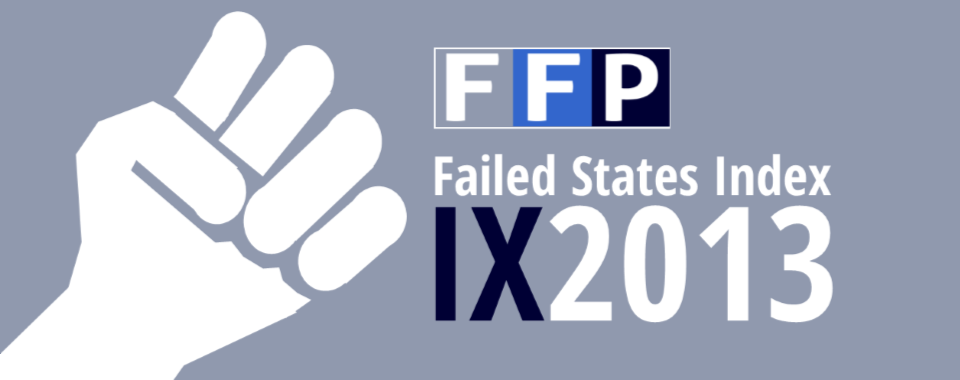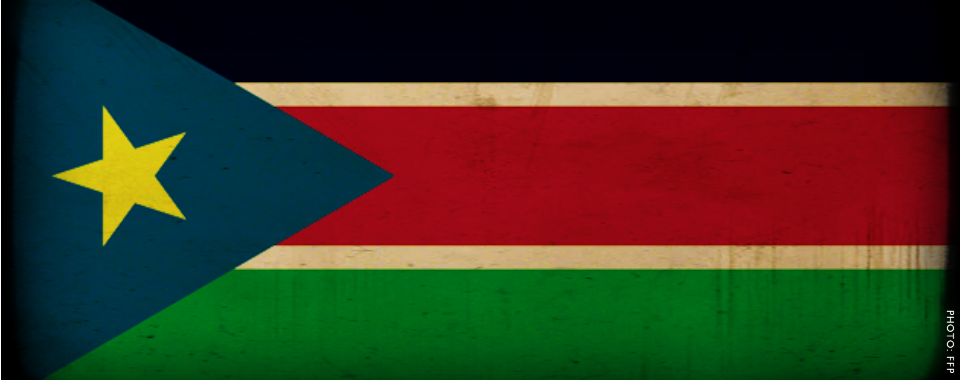BY PATRICIA TAFT The top several tiers of the annual Failed States Index (FSI) are often occupied not only by weak and fractured states at risk for conflict, but also states that have, over the years, been the proverbial thorns in the side of the international community. Each year these chart toppers, often impervious by […]
Category Archives: Fragile States Index 2013
Failed States Index 2013: The Book
- 24 June 2013

BY J.J. MESSNER, NATE HAKEN, KRISTA HENDRY, PATRICIA TAFT, KENDALL LAWRENCE, SEBASTIAN PAVLOU, FELIPE UMANA The Failed States Index, produced by The Fund for Peace, is a critical tool in highlighting not only the normal pressures that all states experience, but also in identifying when those pressures are pushing a state towards the brink of […]
Failed States Index 2013: The Troubled Ten
- 24 June 2013

BY J.J. MESSNER AND KENDALL LAWRENCE Though it is called the Failed States Index, that is not to say that every country on the FSI is a failed state — after all, Finland is ranked on the FSI. That is also not to say that any country on the FSI is necessarily failed — though […]
Most Worsened Country for 2013: Mali
- 24 June 2013

BY SEBASTIAN PAVLOU 2012 saw Mali’s embroilment in a series of compounding political, security and humanitarian crises. An armed conflict has broken out in northern Mali since January 16, 2012 involving several insurgent groups rebelling against the Malian government for the independence of the northern region of Azawad. Further complications arose when Malian soldiers, dissatisfied […]
Multidimensional Solutions: The Four D’s of Human Security
- 24 June 2013
BY KRISTA HENDRY Tackling state fragility — once it has been identified by tools such as the Failed States Index (FSI) — is by no means a simple or straightforward task. Nor is it a one-dimensional task that can be undertaken alone. Building a state and society that protects human security requires a multifaceted strategy […]
No State is an Island: The Importance of a Multisectoral Approach
- 24 June 2013
BY KRISTA HENDRY In the 2013 Failed States Index (FSI), we call attention to the linkages between the underlying causes of state fragility. Essentially, no state is an island, and pressures in one state, no matter how seemingly isolated, often lead to wider destabilization. The pressures that can underlay and lead to conflict are normally […]
The Recovery of Somalia: Check Back With Us Again Next Year
- 24 June 2013

BY FELIPE UMANA Somalia has been what many would describe as the quintessential “failed state” since the inception of the Failed States Index (FSI). Struggling with an occasionally unforgiving semi-arid topography in much of the North, widespread poverty as a result of tight competition for few resources, and mired by high levels of insecurity, an […]
Most Improved Country for 2013: Japan
- 24 June 2013

BY SEBASTIAN PAVLOU Japan continues to recover with relative speed from the triple crisis of earthquake, tsunami and nuclear plant meltdown that devastated the country on March 11, 2011. After the 9.0 magnitude earthquake and subsequent tsunami tore through the country’s north-eastern coastal communities of Miyagi, Iwatu and Fukushima, at least 20,851 people died or […]
The Dark Side of State Building: South Sudan
- 24 June 2013

BY NATE HAKEN AND PATRICIA TAFT For sustainable human security, statebuilding is the only endgame. Absent the state, traditional mechanisms and authority structures might indeed manage communal issues, perhaps even better than would the state. Trans-communal issues like environmental degradation, complex humanitarian emergencies, and large scale conflict, however, go beyond the jurisdiction and capacity of […]
Anatomy of a Storm: Regional Impacts of the Arab Spring
- 24 June 2013
BY NATE HAKEN Does state failure matter? Obviously it matters mostly for the population of that country, but even for its neighbors, the answer is a resounding yes. Chaos in a single country can often impact an entire region. In 2011, as measured in the 2012 FSI, Tunisia and the wider “Arab Spring” were the […]
